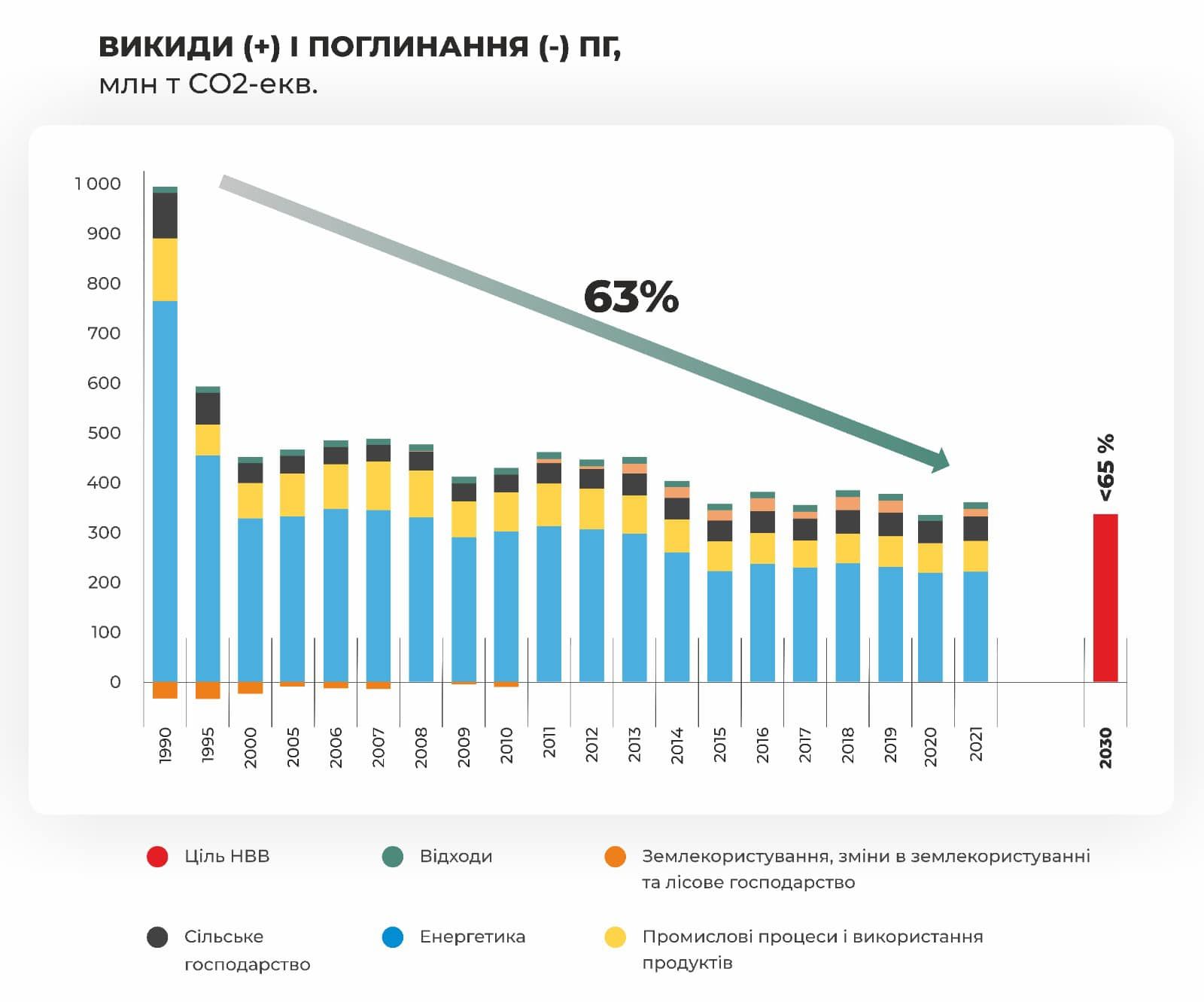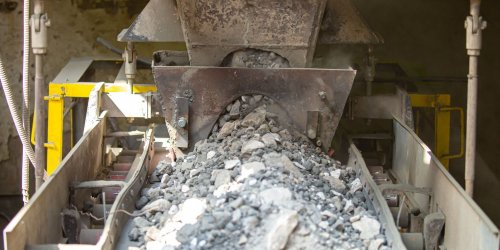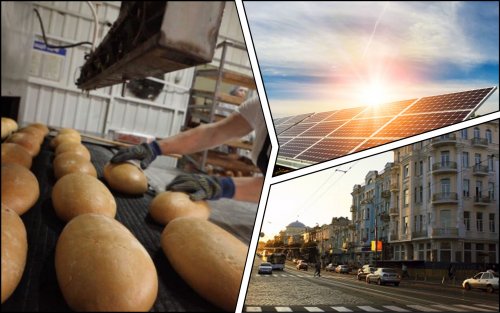In Ukraine, greenhouse gas emissions from 1990 to 2021 decreased by 62.5% and reached 341.5 million tons of CO2 equivalent.
This is evidenced by the analysis of data from the National Cadastre of anthropogenic emissions from sources and absorption by sinks of greenhouse gases, the Ministry of Environmental Protection and Natural Resources reports on Facebook.
It is noted that the National Cadastre was prepared by the agency together with the National Center for Accounting for Greenhouse Gas Emissions. The creation of the cadastre is part of the requirements of the UN Framework Convention on Climate Change, and its submission is part of Ukraine's international obligations.
The report emphasized that the dynamics of emissions directly depended on various economic and social events in the country and the world. Namely:
- 1990-2000 – a sharp reduction in emissions;
Аs a result of the collapse of the USSR, industrial and agricultural production decreased. Also, during this period, fuel consumption in the energy industry decreased, the economy was restructured, and the service sector began to grow.
- 2000-2008 – stabilization and growth of emissions;
The report emphasized that the increase in emissions was associated with the increase in the production of mineral and metallurgical products, as well as with the general growth of the economy. The consumption of solid fossil fuels in the energy sector has increased. However, industry has begun to implement a number of modernization and energy efficiency measures. The modernization was aimed at reducing the consumption of natural gas due to its increase in price since 2006.
- 2009 – reduction by 15%;
"Emissions decreased against the background of the global economic crisis of 2008. In particular, the production of cement, ammonia, and metal has significantly decreased," the report says.
- 2010-2013 – growth of emissions;
The message explained that the reason for the increase in emissions was the recovery of the economy after the 2008 crisis. During this period, the consumption of solid fossil fuels in the energy sector increased due to the gas conflict with the Russian Federation.
- 2014-2015 – sharp reduction;
The press service of the Ministry of Environment said that the reduction in emissions was due to the fall in the economy due to the start of the war, the occupation of Crimea, and hostilities in the Donetsk and Luhansk regions.
- 2016-2019 – fluctuating emissions at the level of 337-362 million tons of CO2-equivalent;
It is noted that during this period the active implementation of the energy efficiency policy began, in particular the program "Warm credits". Also during this period, tariffs for electricity, hot water and heat gradually brought them to market values.
- 2020 – reduction by 11%;
The message explained that the reduction in emissions occurred against the background of the COVID-19 pandemic and quarantine restrictions.
- 2021 – growth by 7.5%.
The press service said that such an increase in emissions is related to the recovery of the economy after the pandemic.
It is noted that the National Cadastre allows Ukraine to analyze trends in emissions and absorption of greenhouse gases and to formulate further climate policy based on them. On its basis, the international community can also assess the dynamics of changes in emissions in Ukraine and, accordingly, the adequacy and effectiveness of the measures taken.
"The cadastre will be useful for operating companies that register their installations in the Unified Register for Monitoring, Reporting and Verification of Greenhouse Gas Emissions. After all, data from the National Cadastre are necessary for making calculations and submitting reports," the message added.
As EcoPolitic reported before, the Ministry of Environmental Protection and Natural Resources will conduct discussion of the developed project National inventory of anthropogenic emissions from sources and absorption by sinks of greenhouse gases in Ukraine for 1990-2021.





